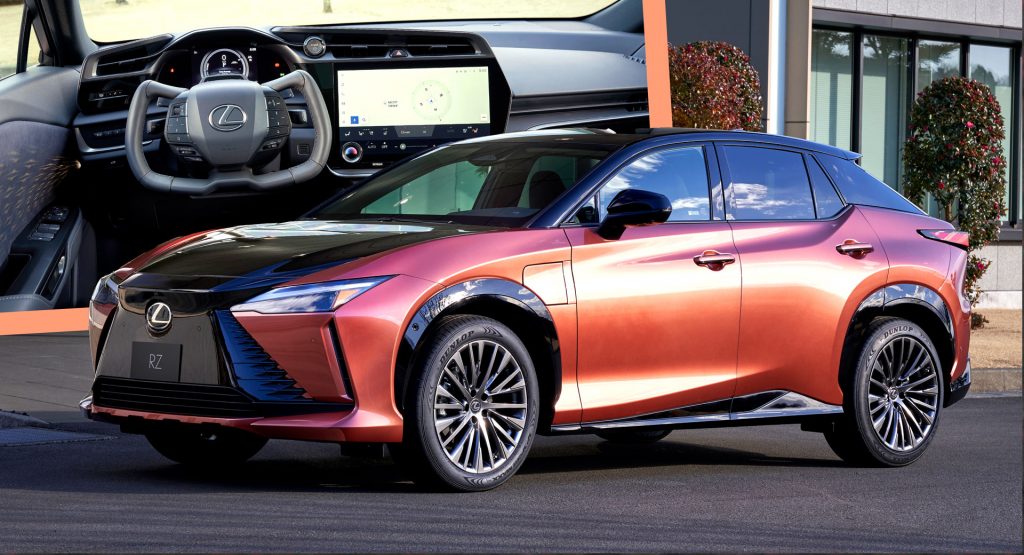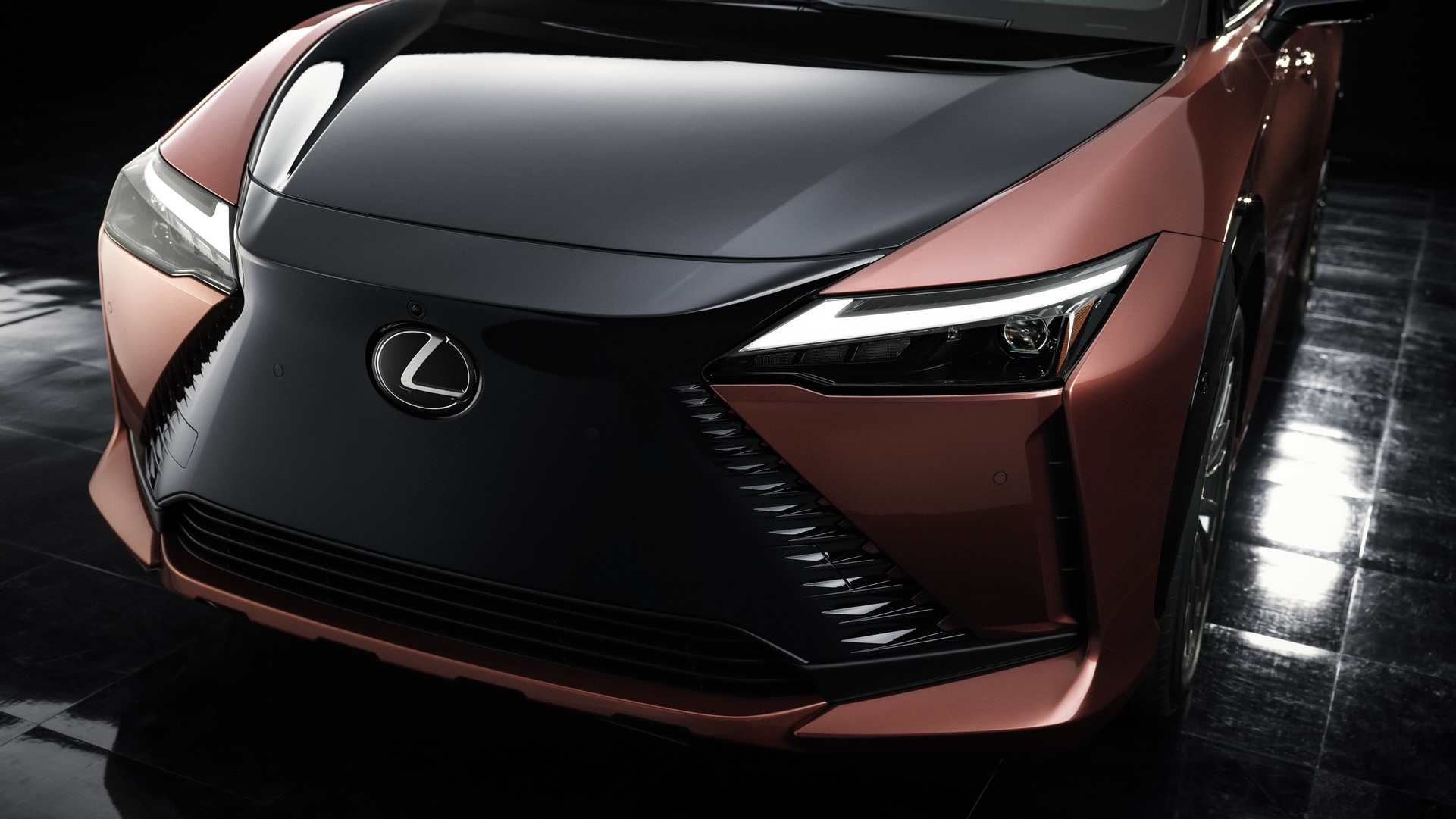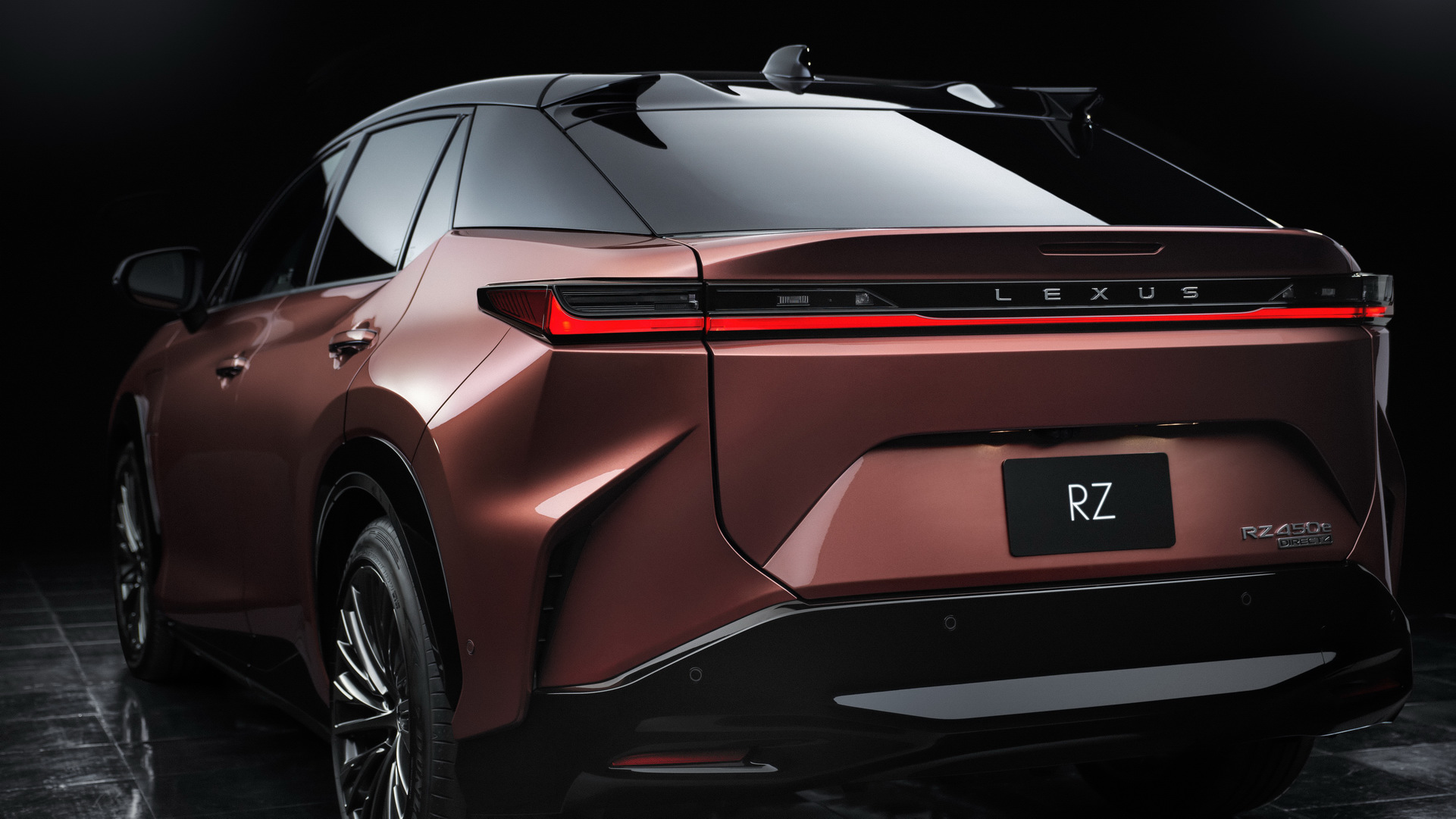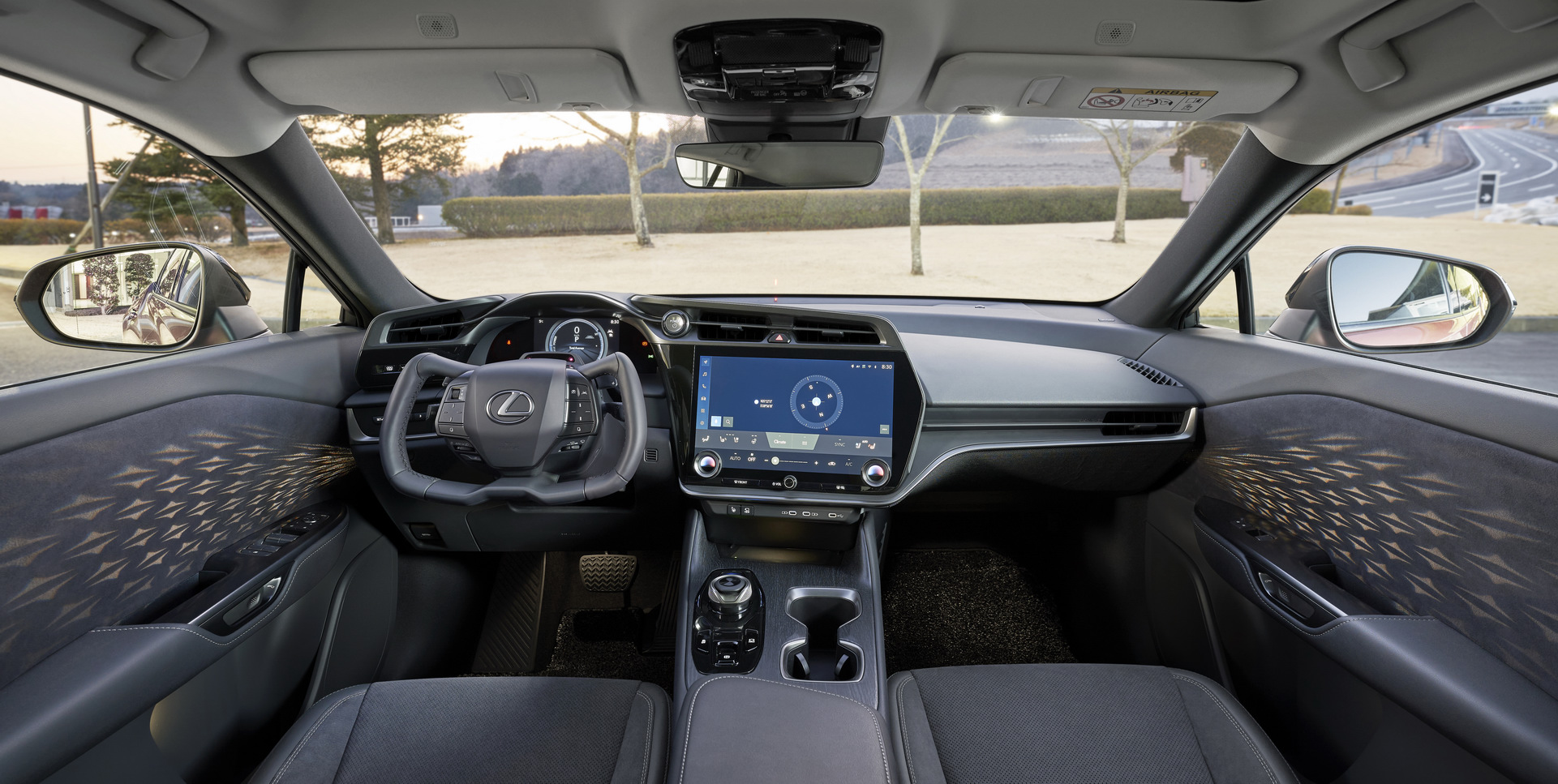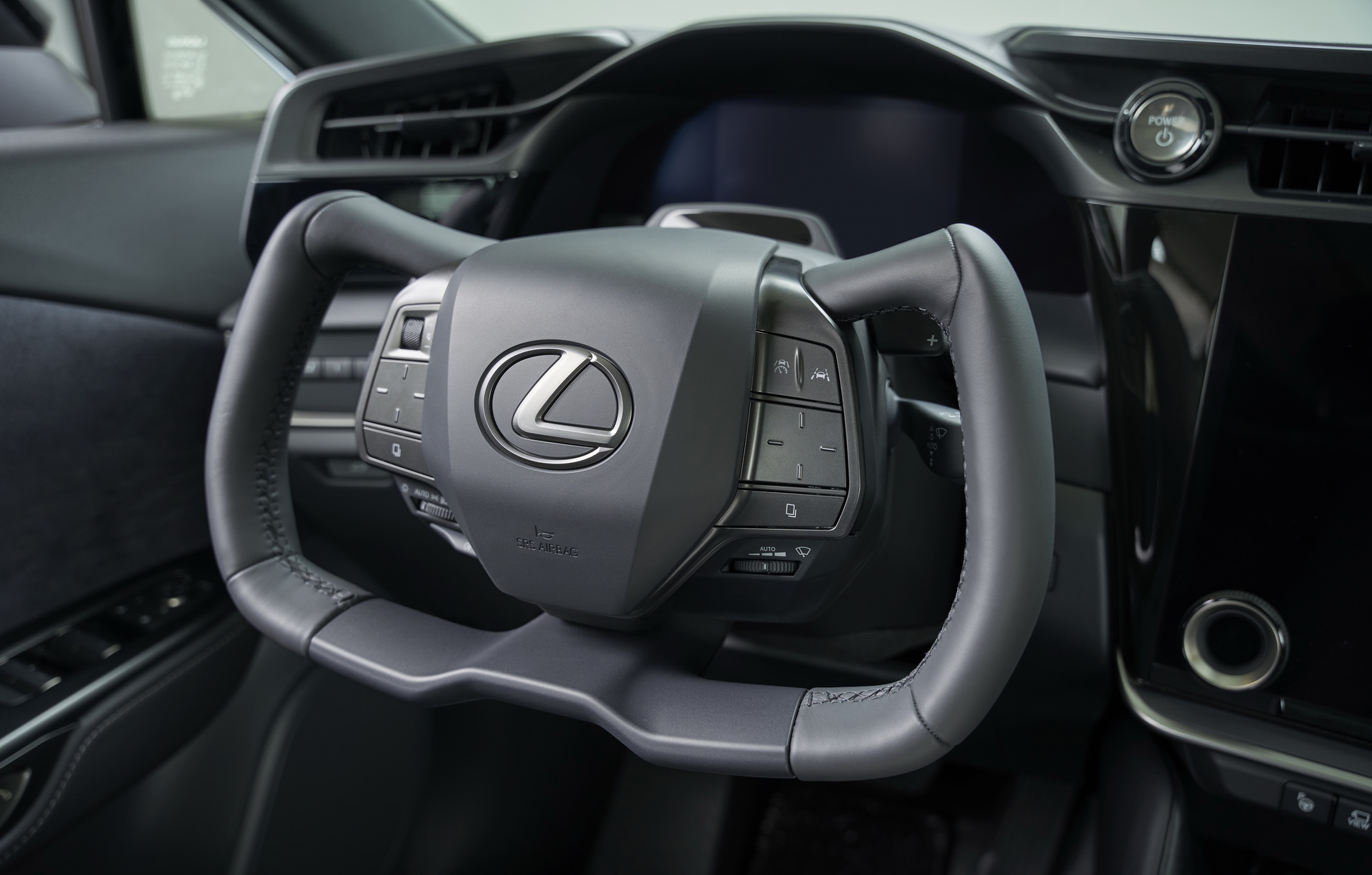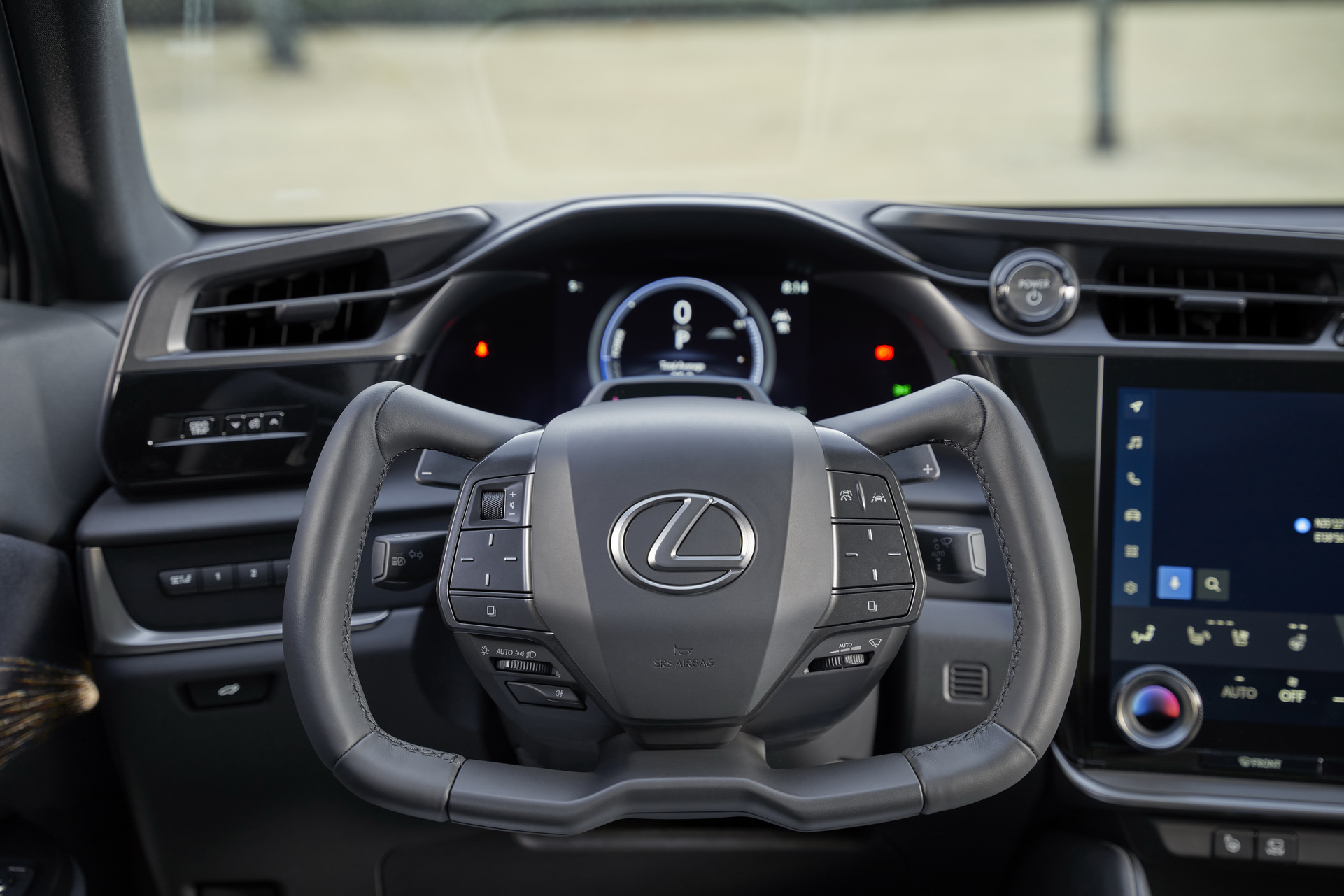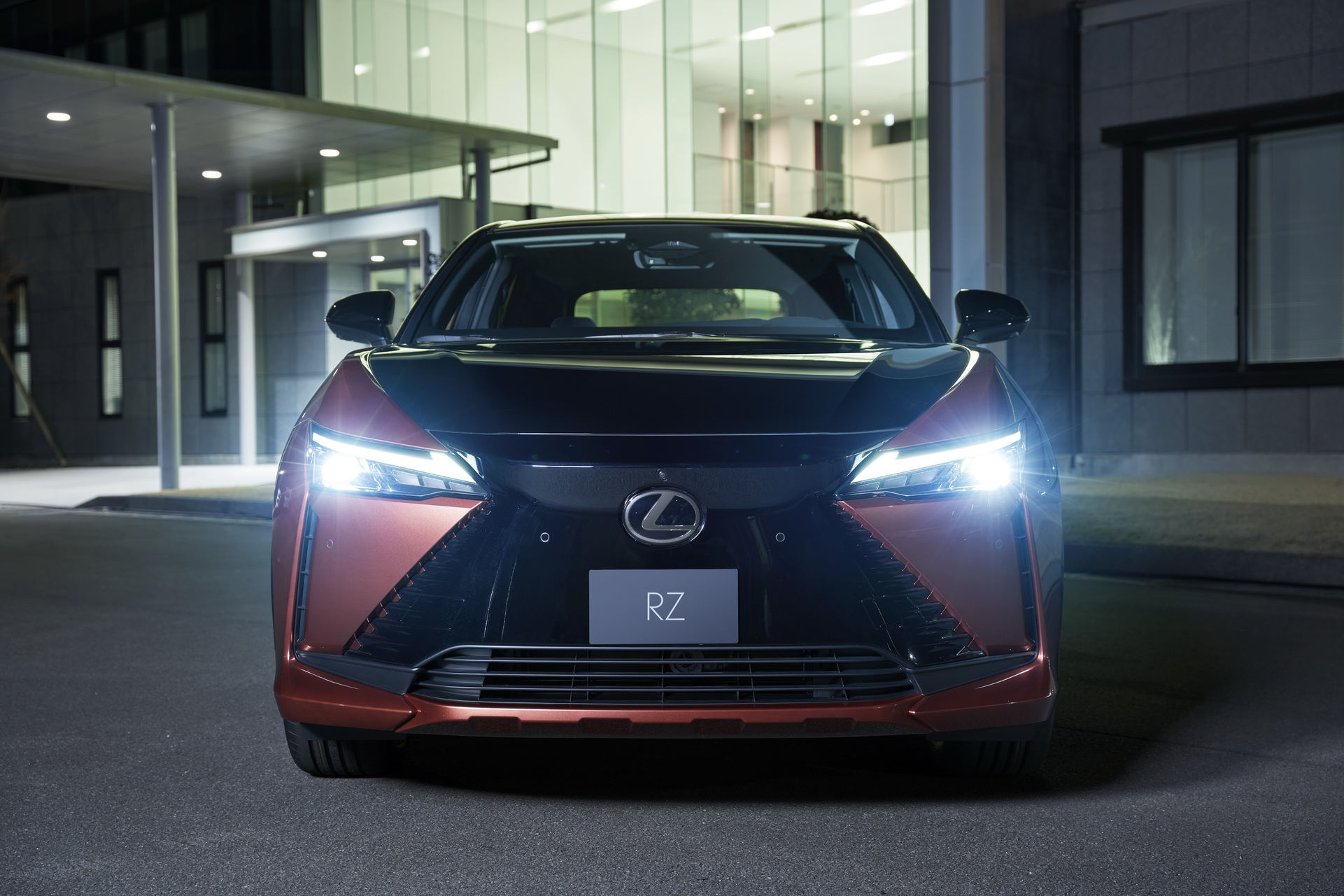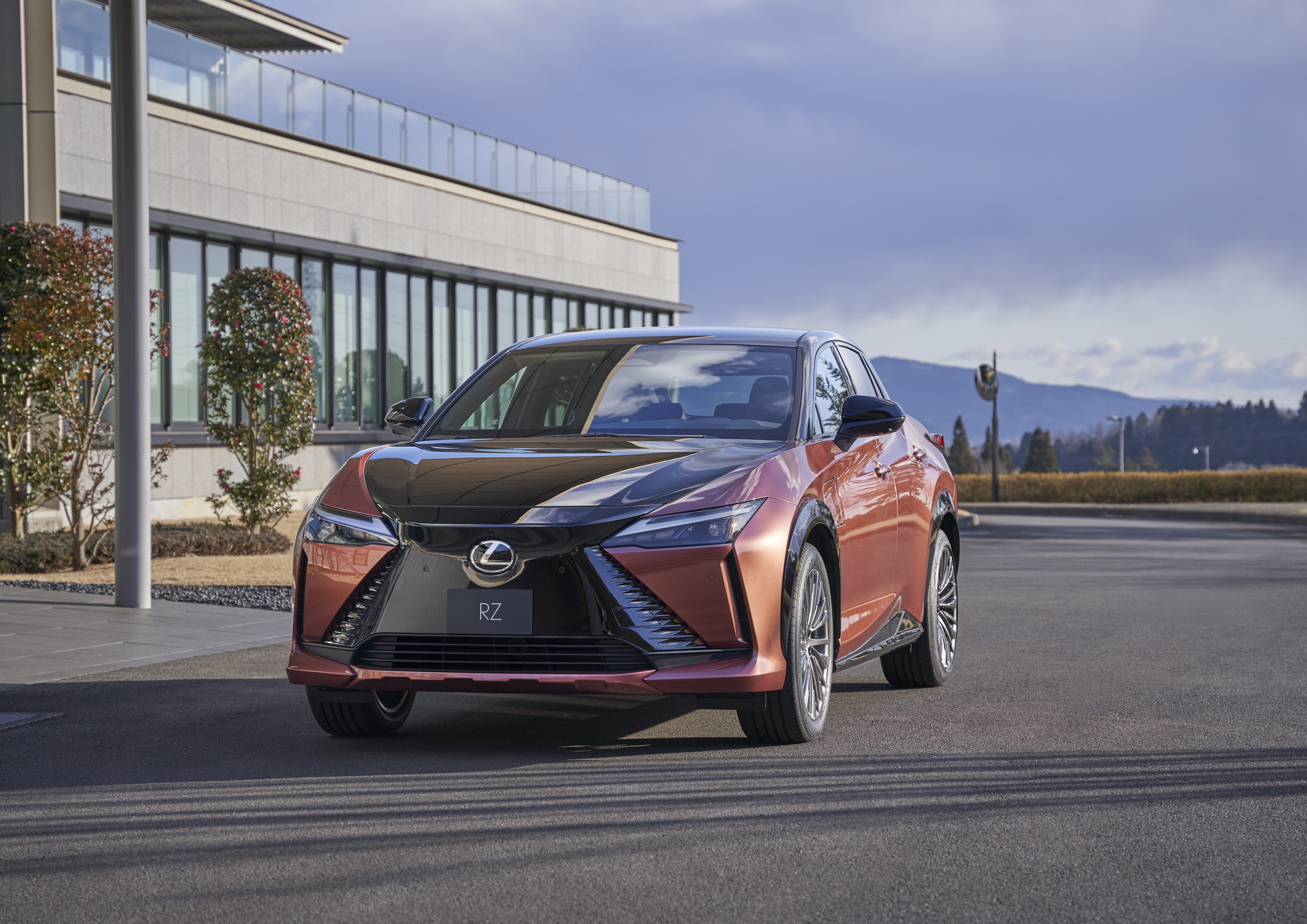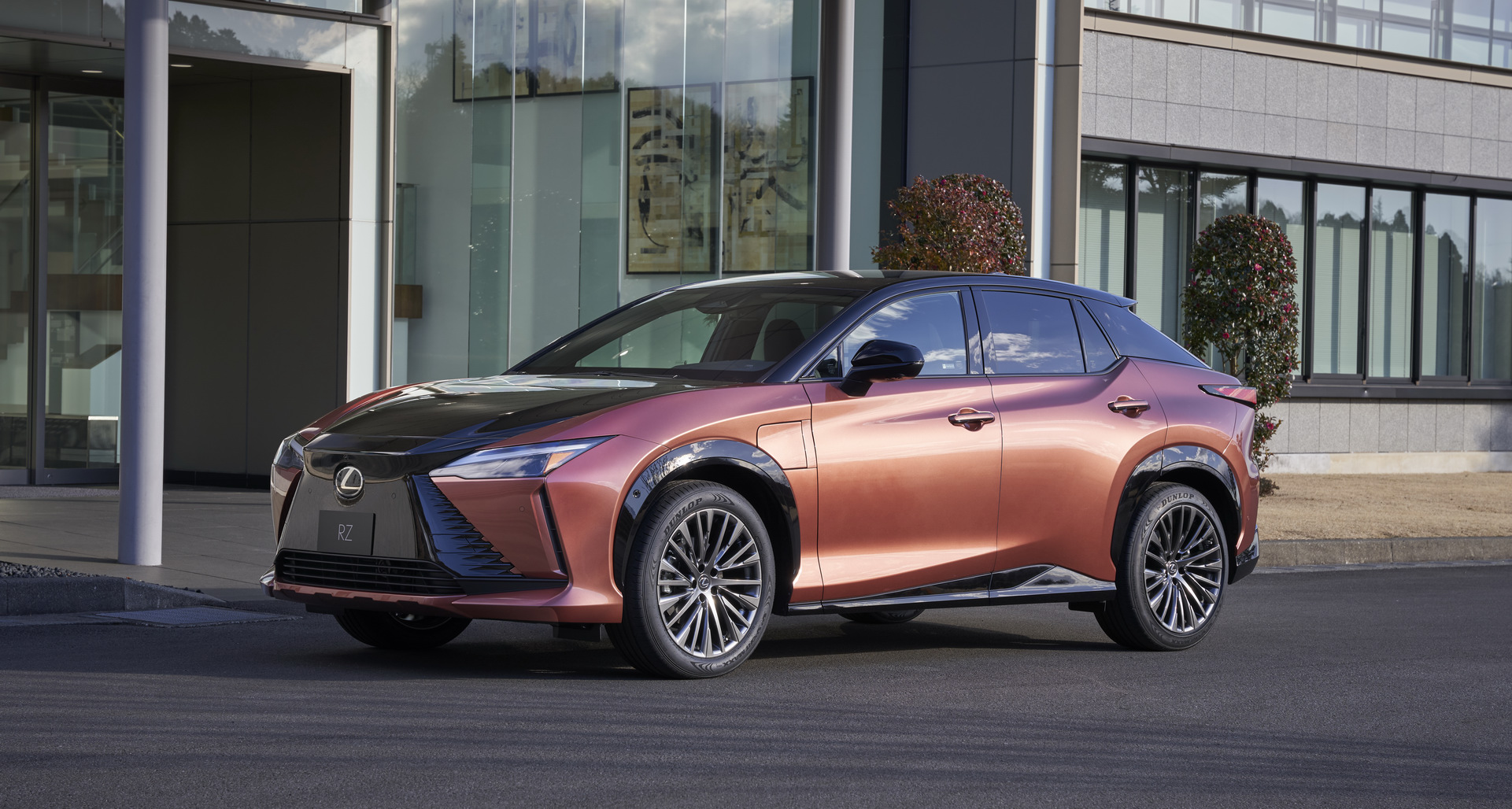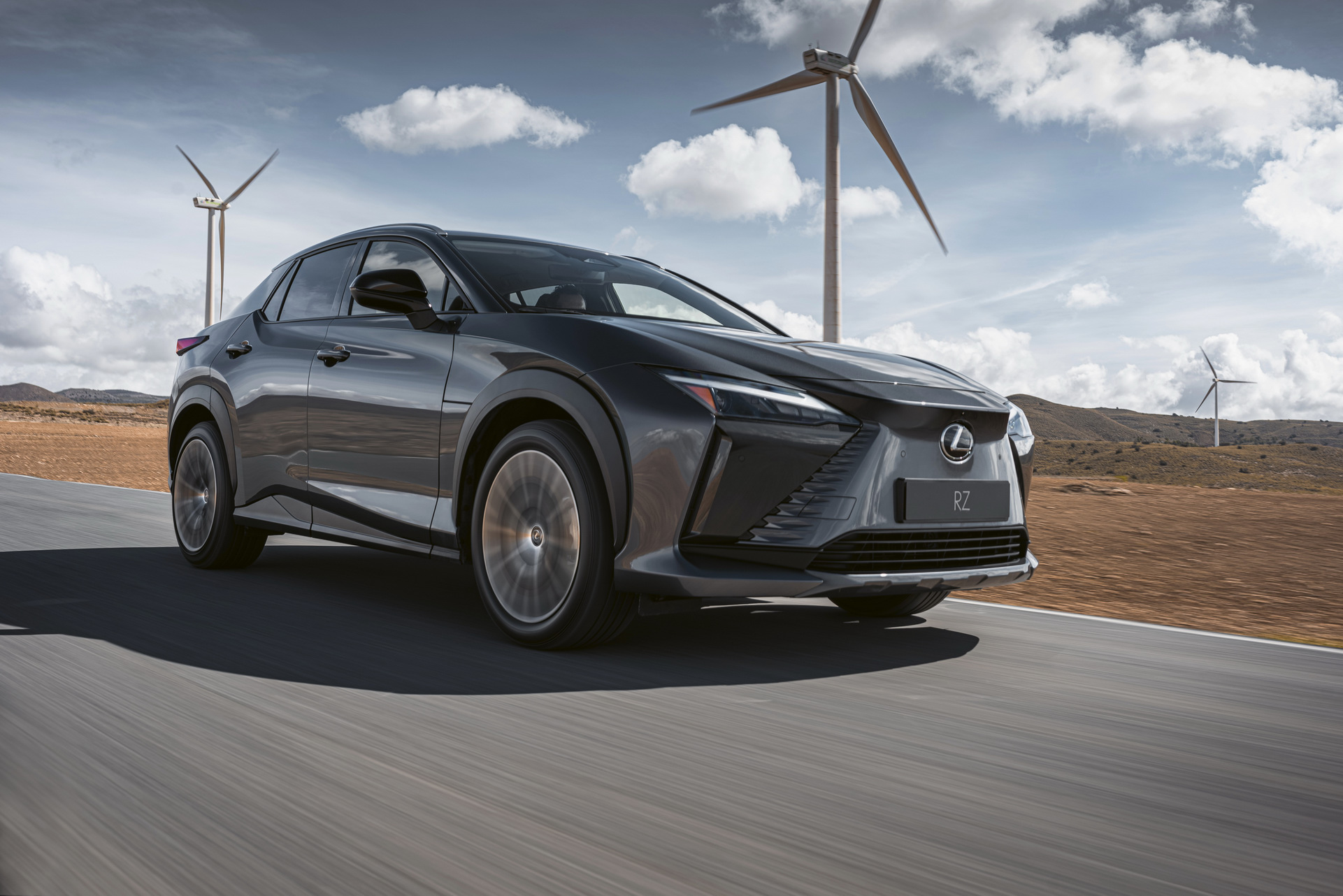Lexus has fully unveiled the RZ, its first production model based on the e-TNGA EV-dedicated platform. The Lexus RZ is a crossover sibling to the Toyota bZ4x and Subaru Solterra but it comes with a different body, more premium characteristics and features as well as a more powerful all-wheel drive powertrain.
We already had a good idea of Lexus RZ’s design since Lexus had shown us many official photos in the previous months. While the proportions and the hardpoints look similar to the Toyota and Subaru siblings, all of the body panels in the Lexus are new giving it a more aerodynamic silhouette and sculpted look.
This is more evident at the back with the high-mounted full-width LEDs, the heavily inclined rear windscreen, the integrated duck-tail spoiler, and the vents on the bumper. Having said that, the result is toned-down compared to the LF-Z Electrified concept from last year mostly due to the smaller wheels and the less fancy LED headlights. Another new design feature introduced by the RZ is the covered spindle grille with its shape being accentuated in the bi-tone specification with the black bonnet.
Read Also: We Drive The 2022 Kia EV6, The New EV Benchmark
More importantly, the RZ comes standard with dual electric motors producing 201 hp (150 kW / 204 PS) at the front and 107 (80 kW / 109 PS) at the rear, for a combined 309 hp (230 kW / 313 PS) and 435 Nm (321 lb-ft) of torque. The model is also the first to introduce Lexus’ new Direct4 all-wheel drive control. The electronic system can change the torque distribution to front and rear e-Axles from 0 to 100 percent in a matter of milliseconds.
The output is considerably increased compared to the 215 hp (160 kW / 218 PS) and 309 Nm (228 lb-ft) of the dual-motor Toyota and Subaru crossovers, justifying Lexus’ premium positioning. As a result, the Lexus RZ accelerates from 0-100 km/h (0-62 mph) in 5.6 seconds, or 5.3 seconds for the Chinese-spec model. However, as with most EVs, the top speed is quite limited at 160 km/h (99 mph).
According to Lexus’s own estimates, the 96-cell 71,4 kWh lithium-ion battery will offer a J-WLTC range of approximately 450 km (280 miles), with Lexus Europe mentioning a WLTP range of more than 400 km (249 miles) and a power consumption below 18 kilowatts per 100 km. This is less impressive than the confirmed 470 km (292 miles) WLTP range of the EU-spec Toyota bZ4x which is predictable due to the higher output and better performance offered by the Lexus. It is also very similar to the Genesis GV60 which is considered one of the main rivals.
Inside, the evolution of the “Lexus Tazuna” digital cockpit comes with a compact instrument cluster and a large 14-inch touchscreen for infotainment on the inclined center console. The optional “One-Motion Grip” yoke-style steering wheel is made possible thanks to the steer-by-wire technology but we are sure that many buyers will settle for the less futuristic but more familiar standard round-shaped steering wheel.
The cabin has premium materials, and features ambient lighting with fancy patterns on the door panels, a radiant heating system for the driver and the front passenger, and an optional self-dimming panoramic sunroof which contributes to energy-saving.
Safety equipment includes the Lexus Safety System+ 3.0 suite with sophisticated ADAS including the Pre-Collision System and the Dynamic Radar Cruise Control taking feedback from the optional driver monitor system. In Europe, the RZ will also get the Proactive Driving Assist, which adjusts the steering based on a front-mounted camera reading the angle of the upcoming bends. Finally, the e-Latch electronic door release system won’t allow passengers to exit if there is an approaching vehicle or cyclist.
The Lexus RZ450e is already available for online reservations. Pricing has yet to be announced but we are sure it will cost more than the highest spec of the less powerful and more mainstream dual-motor Toyota bZ4x Limited which sells for $48,780 in the US.




